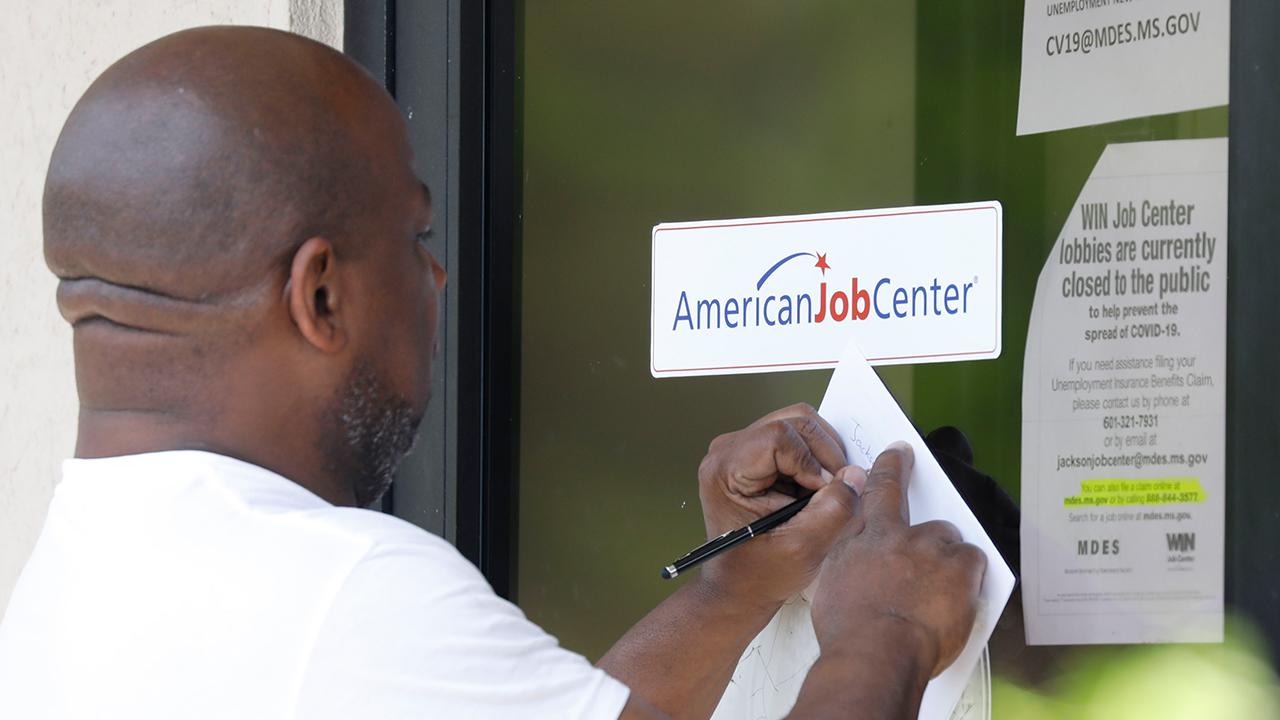Coronavirus stimulus package expands unemployment benefits — here's how it works
The CARES Act expanded unemployment benefits for Americans out of work because of the pandemic
Get all the latest news on coronavirus and more delivered daily to your inbox. Sign up here.
President Trump last week signed into law a massive $2 trillion stimulus package aimed at addressing the dual economic and health crises caused by the coronavirus pandemic, including broadening unemployment coverage for the growing number of Americans out of work.
In the final two weeks of March, nearly 10 million Americans filed for unemployment benefits -- a record-shattering number that trounces the level of jobless claims seen during the 2008 financial crisis. It’s a stunning sign of the depth of the economic damage inflicted by the outbreak.
HOW TO FILE FOR UNEMPLOYMENT BENEFITS
Estimates vary drastically for how high unemployment will climb, but economists broadly agree that it will be grim. An analysis published by the Federal Reserve Bank of St. Louis last week projected that unemployment could hit 32 percent in the second quarter as more than 47 million workers are laid off because of the pandemic. That would exceed the 24.9 percent peak during the Great Depression.
FOX Business answers the key questions you have about unemployment insurance and the pivotal changes passed in the CARES Act.
Who is eligible for unemployment insurance?
Unemployment benefits are typically available to Americans if they have been laid off from their job, although specifics vary state to state. Generally, Americans who are self-employed, unable to work or do not have a recent earnings history are ineligible to receive the benefits. The program also tends to exclude people who were fired or quit their jobs without good cause.
US EMPLOYERS SHED 701,000 JOBS AS CORONAVIRUS RAVAGES US ECONOMY
However, the CARES Act expands eligibility to include self-employed people, those seeking part-time employment and independent contractors. Americans who are diagnosed with COVID-19, the respiratory illness caused by the novel coronavirus, or who are unable to go to work because of quarantine would also be eligible.
Who isn’t eligible?
Individuals who are receiving paid sick leave or other paid-leave benefits do not qualify to receive unemployment insurance.
How much will the unemployment check be?
Benefits vary by state, but the stimulus package increases unemployment assistance in every state by $600 a week for up to four months. For instance, the maximum weekly benefit check in New York is $504. That would increase the weekly limit to $1,100. The maximum weekly benefit check in Massachusetts is $823, while the maximum in Mississippi is just $235.
When will I start receiving the extra $600?
There is no waiting period for the money, which will be distributed when the state decides to offer the payment, according to Iowa Sen. Chuck Grassley. The extra funds will last through July 31. Labor Secretary Eugene Scalia told The Wall Street Journal this week that federal funds to boost unemployment benefits went out to states this week.
CORONAVIRUS LAYOFFS SKYROCKET, CATCHING NEARLY HALF OF STATE UNEMPLOYMENT PROGRAMS UNPREPARED
How do I apply for unemployment insurance?
To apply for benefits, contact your state’s unemployment office. You can typically file your claim online, via phone or in person.
How long do benefits last?
Some states offer fewer weeks of benefits than others, but under the stimulus plan, anyone who’s out of work when their state period-benefit period concludes will be eligible to receive payments for another 13 weeks from the federal government.
Are Americans who started getting unemployment benefits before the relief package still eligible for the expanded benefits?
Yes. Expanded benefits, including the extra $600 a week, would kick in for anyone who has been unemployed.




















